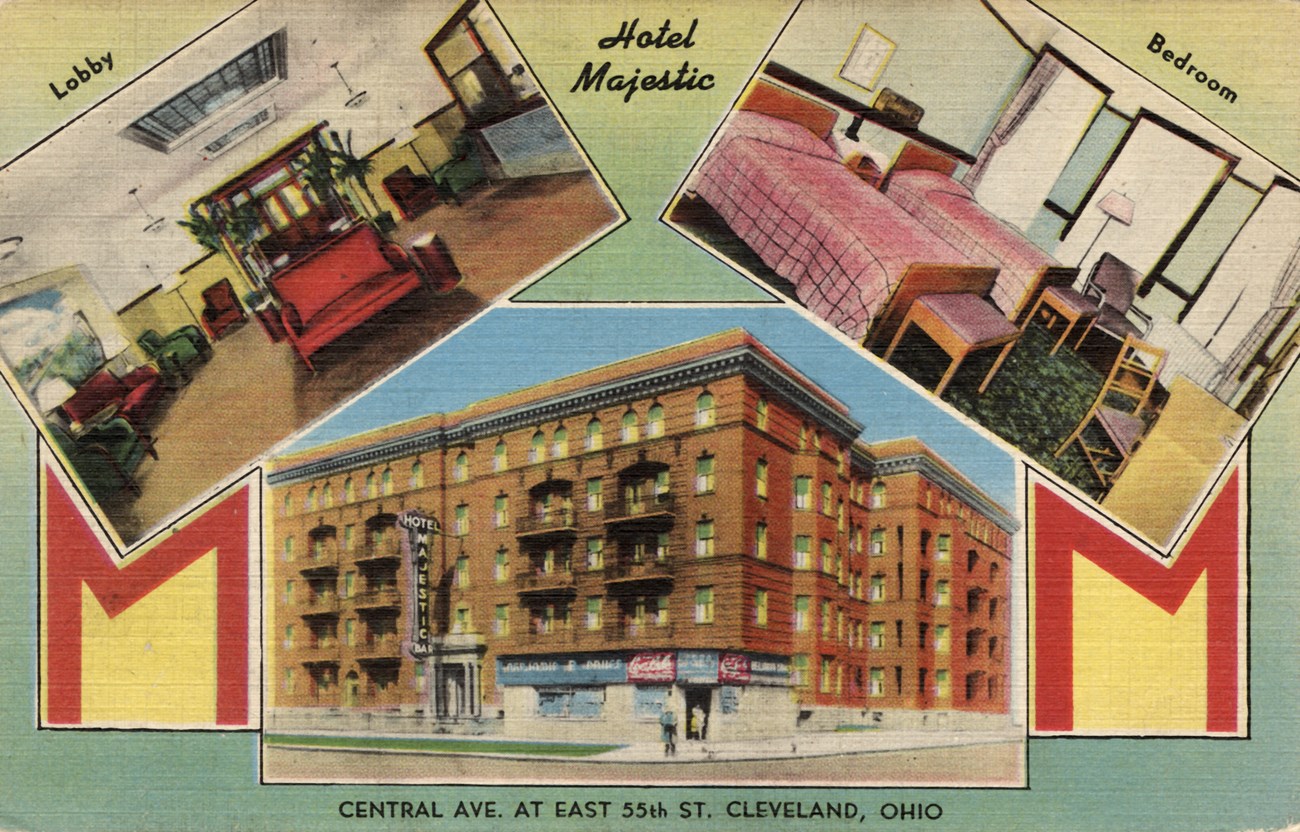Last updated: January 9, 2025
Article
Green Book Cleveland: Remembering Black Recreation and Resistance in Northeast Ohio

Cleveland State University / Michael Schwartz Library
Green Book Cleveland is a restorative history project of the Center for Public History + Digital Humanities at Cleveland State University and Cuyahoga Valley National Park. Our main collaborators are ThirdSpace Action Lab, Cleveland Metroparks, Summit Metro Parks, Ohio & Erie Canalway, Trust for Public Land, and Conservancy for Cuyahoga Valley National Park. With help from community members, we are preserving stories of Black leisure and entertainment in Northeast Ohio.
From 1936-1966, the Green Book helped Black motorists safely navigate trips away from home during America’s Jim Crow era. This travel guide advertised businesses in each state where people of color were welcome. The history of Green Book sites is a special emphasis of the African American Civil Rights Network. Our local work will contribute to this national story and add new chapters that bring to life the more recent past.
Cuyahoga Valley was established in 1974 as part of a federal "Parks to People" policy to bring the national park experience closer to urban centers. It is a greenspace linking Cleveland and Akron along historic transportation routes. This Green Book Cleveland research helps us better understand our role within the local metropolitan community and within the National Park Service.
This year-end Green Book Cleveland blog summarizes our team's 2023 work.

Share Your Memories and
“Imagine a Healed Future”
Who remembers the old times?
- Playing
- Swimming
- Picnicking
- Hiking
- Biking
- Camping
- Dancing
- Dining
- Games
- Music
Starting in 2023, we are recording oral histories, gathering newspaper accounts, and scanning old photos to share on the Green Book Cleveland website. Browse to see what we’ve learned already. We hope this inspires community activists, educators, artists, and park planners to help make Northeast Ohio a more welcoming place for everyone.
Can you help? Contact us at e-mail us.
Our first joint project is funded by a civil rights grant from the National Park Service.
Learn More
Rangers are researching a variety of Black history connections to Cuyahoga Valley and weaving these stories into all our park themes. More broadly, the National Park Service preserves many important sites associated with Civil Rights in America.
Three community projects are informing Green Book Cleveland.
The first is Chocolate City Cleveland. ThirdSpace Action lab is “capturing stories from people that live, work, play, and pray in the neighborhoods that constitute the Black East Side.” Their first action is to make an interactive virtual tour of Black heritage spots around East 105th Street.
The second is the Akron Innerbelt project. When construction began on this highway in 1970, it destroyed a vibrant Black neighborhood, displacing residents and businesses. The northern part erased Akron’s historic jazz district where legendary acts once played. In 2018, a portion of the Innerbelt was decommissioned. The City of Akron is working with community partners on an inclusive planning effort to reckon with this painful history and “imagine a healed future.”
The third is an effort to document the Black community of Twinsburg Heights, located just east of Cuyahoga Valley. Filmmaker Carla Carter worked with high school students to create a documentary called Voices of the Hill. It premiered in 2016.

Cleveland Public Library / Photo Collection
